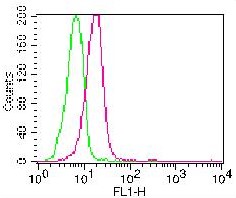Monoclonal Antibody to PAPP-A (Clone: ABM4C62)

Fig-1: Immunohistochemical analysis of PAPP-A in human Placenta tissue using PAPP-A antibody (Clone: ABM4C62) at 5 µg/ml.
Roll over image to zoom in
Shipping Info:
Order now and get it on Friday April 25, 2025
Same day delivery FREE on San Diego area orders placed by 1.00 PM
| Format : | Purified |
| Amount : | 100 µg |
| Isotype : | Mouse IgG2b Kappa |
| Purification : | Protein G Chromatography |
| Content : | 25 µg in 50 µl/100 µg in 200 µl PBS containing 0.05% BSA and 0.05% sodium azide. Sodium azide is highly toxic. |
| Storage condition : | Store the antibody at 4°C; stable for 6 months. For long-term storage; store at -20°C. Avoid repeated freeze and thaw cycles. |
| Gene : | PAPPA |
| Gene ID : | 5069 |
| Uniprot ID : | Q13219 |
| Alternative Name : | Insulin-like growth factor-dependent IGF-binding protein 4 protease, IGF-dependent IGFBP-4 proteas, Pregnancy-associated plasma protein A |
| Immunogen Information : | A partial length recombinant PAPP-A protein (amino acids 332-561) was used as the immunogen for this antibody. |
PAPP-A (pregnancy-associated plasma protein A) is a zinc metalloproteinase in the insulin-like growth factor system that is expressed by tissues outside of pregnancy and involved in normal and dysregulated growth. It has prognostic impact in pregnancy and acute coronary syndrome. PAPP-A regulate the activity of insulin-like growth factor (IGF) signal pathway through proteolytic degradation of IGF binding proteins (IGFBPs) thereby increasing the local concentration of free IGFs available to receptors. PAPP-A levels is associated with abnormal glucose metabolism and increased risk of atherosclerosis in AGHD (Adult Growth Hormone Deficiency) patients.
Immunohistochemical analysis: 5-10 µg/ml
For Research Use Only. Not for use in diagnostic/therapeutics procedures.
| Subcellular location: | Secreted |
| Post transnational modification: | There appear to be no free sulfhydryl groups. |
| Tissue Specificity: | High levels in placenta and pregnancy serum. In placenta, expressed in X cells in septa and anchoring villi, and in syncytiotrophoblasts in the chorionic villi. Lower levels are found in a variety of other tissues including kidney, myometrium, endometrium, ovaries, breast, prostate, bone marrow, colon, fibroblasts and osteoblasts. |
| BioGrid: | 111104. 10 interactions. |
|
There are currently no product reviews
|













.png)












